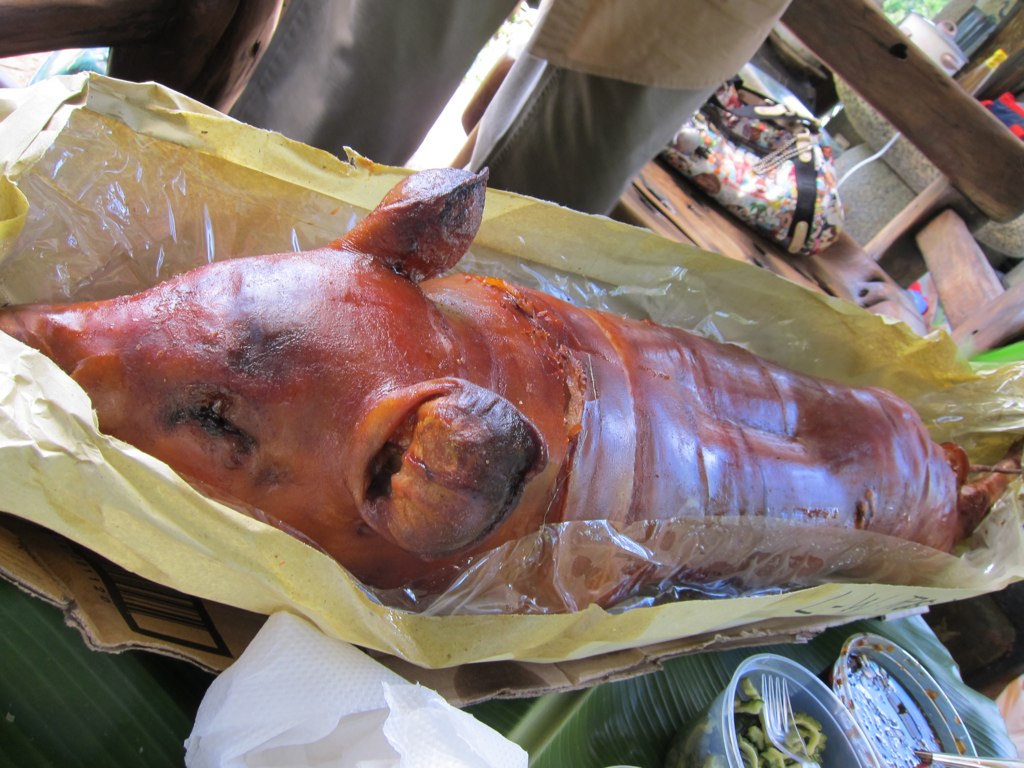
Who Influenced the Dish & Who Named It?
Lechon is considered one of the Philippines’ most beloved national dishes, if not the national dish, which reflects the country’s love of pork and feasts. Learn the lechon history of how the roasted pig originated:
Lechon History in the Philippines
What is Lechon?
Lechon comes from the Spanish word “leche” which means milk and refers to the milk-fed whole roasted suckling piglet.
In the Philippines, lechon is a whole roasted adult pig that is slowly rotated over an open charcoal grill to achieve a crisp skin and succulently tender meat.
Pre-Hispanic Origins
Well before the Spaniards set foot in Asian countries, roasted pork had long existed in Austronesian cultures (which includes peoples in Taiwan, Southeast Asia, Oceania, and Madagascar).
Pigs originated in China where traders introduced the species all throughout Southeast Asia and Oceania and even taught the populations about cooking pork and roasting pig.
Spanish Influence on Lechon
While roasting pigs already existed in the Philippines before the Spanish arrived, it was the Spaniards who labeled the process of roasting a whole pig, lechon.
In fact, lechon, lechon asado, and lechona are names for roasted pork in countries like Cuba, Puerto Rico, the Dominican Republic, and Colombia.
Historically during the Spanish Inquisition years, the Spanish tested Muslims and Jews who were converting to Christianity by having them eat pork. In the Philippines, they saw the many religions of the country, so they promoted pork in order to spread their culture and religion.
Lechon of the Philippines
Lechon is certainly one of the Philippines’ national dishes that is commonly served during feasts, fiestas, holidays, celebrations, and gatherings for family and friends.
Throughout the country, there are regional variations of how lechon is prepared. In Manila, lechon is eaten with lechon sauce which is a liver-based gravy.
In Cebu, where locals have deep pride in how they cook the pig, lechon is stuffed with herbs like lemongrass, spring onions, bay leaves, and a lot of garlic before cooked over charcoal for hours.
Then, with such a large pig, there are always leftovers, much like Thanksgiving leftovers. In the case of lechon, the leftover dish is called paksiw na lechon which basically stews the skin, meat, and bones in a vinegar-based gravy. It doesn’t look pretty, but it’s definitely a highlight of the next day.
So, like adobo, lechon existed thanks to Chinese influence and given its official name when the Spanish colonized the country.
Sign up for my newsletter on the sidebar for blog updates and my travel insider tips! And, check out my vlogs on YouTube!


